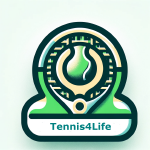Massage and the Tennis for Life Mindset
Why Recovery Is More Than Muscle Relief
The article “Massage Can Help After a Workout, But Not for the Reason You Think” by Christie Aschwanden fits seamlessly into the Tennis for Life ethos. It presents recovery as a thoughtful, long-term practice—an essential part of athletic sustainability, not a quick fix.
Let’s explore how this message aligns with the core values of lifelong tennis performance and well-being.
1. Reframing Recovery: From Myth to Mindful Practice
The article dismantles a common misconception: massage doesn’t flush out lactic acid or significantly boost circulation. These myths aren’t grounded in scientific evidence.
Instead, Tennis for Life focuses on recovery strategies that are both evidence-based and sustainable. Massage, while offering modest physical benefits, plays a key role in stress relief, relaxation, and body awareness—all of which are essential for managing post-match fatigue or re-centering after tough competition.
2. Mental Benefits Outweigh Marginal Physical Gains
Dr. Shona Halson, an expert in recovery science, emphasizes that the real power of massage lies in its ability to promote mental calm and emotional reset. In a sport like tennis—where focus, resilience, and emotional control are critical—this kind of recovery is not optional, it’s strategic.
When integrated with tools like breathwork, mindfulness, and visualization routines, massage becomes part of a high-performance mental toolkit.
3. Recovery for Older Athletes and Long-Term Play
As players age, their recovery strategies must evolve. Massage offers a low-impact method to aid relaxation, regulate the nervous system, and preserve mobility.
Think of it like BOSU training for balance—it’s not flashy, but it’s foundational. These routines build the durability needed to keep moving well, deep into your playing years.
4. The Emotional Reset Factor
Recovery isn’t just physical—it’s psychological. For juniors climbing the ranks or adults grinding through weekend matches, massage can serve as an emotional release valve.
As Dr. Halson puts it, massage creates space to “debrief and unload.” That clarity can be the difference between a downward spiral and a reset that prepares you for the next match.
Wrap
Massage may not drastically reduce soreness or enhance muscle repair, but it plays an undeniable role in how you feel, how you focus, and how long you stay in the game.
For athletes committed to Tennis for Life, it’s a recovery strategy worth prioritizing.



